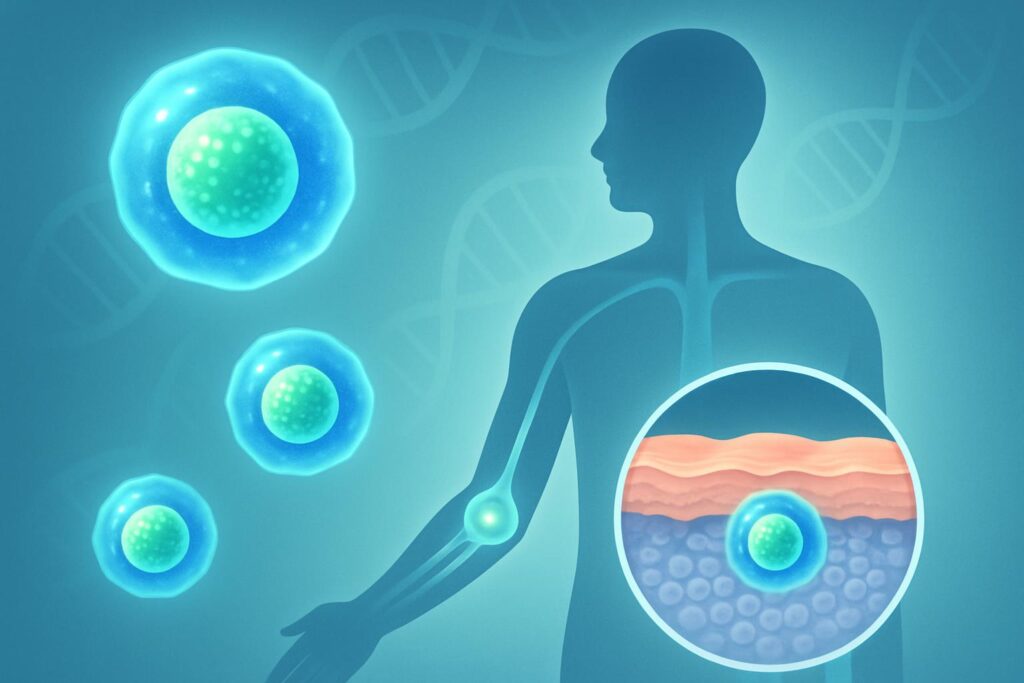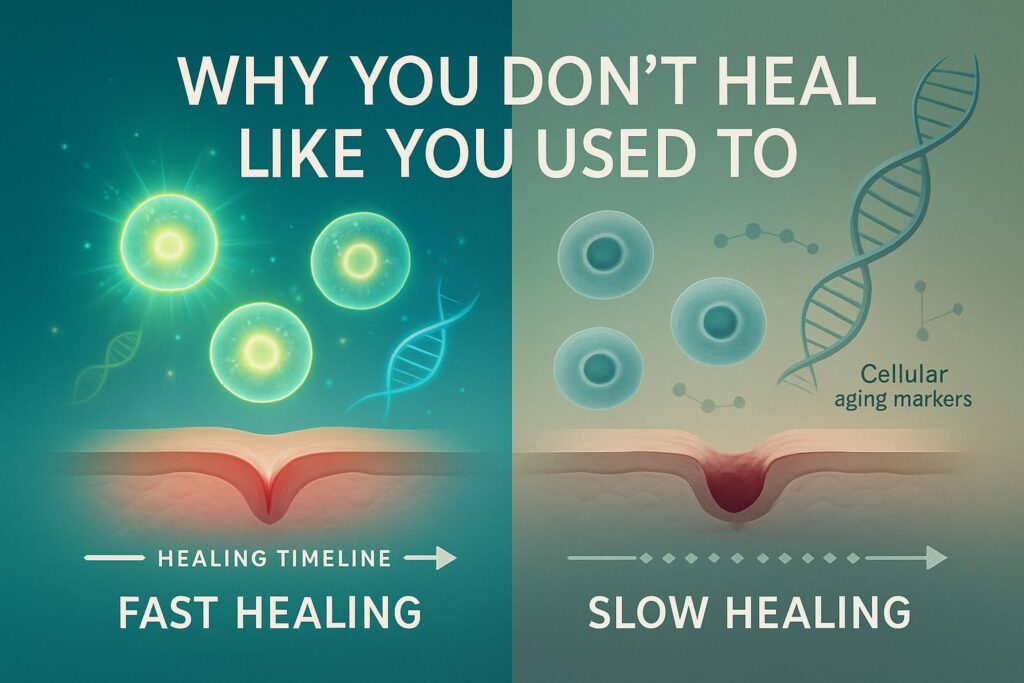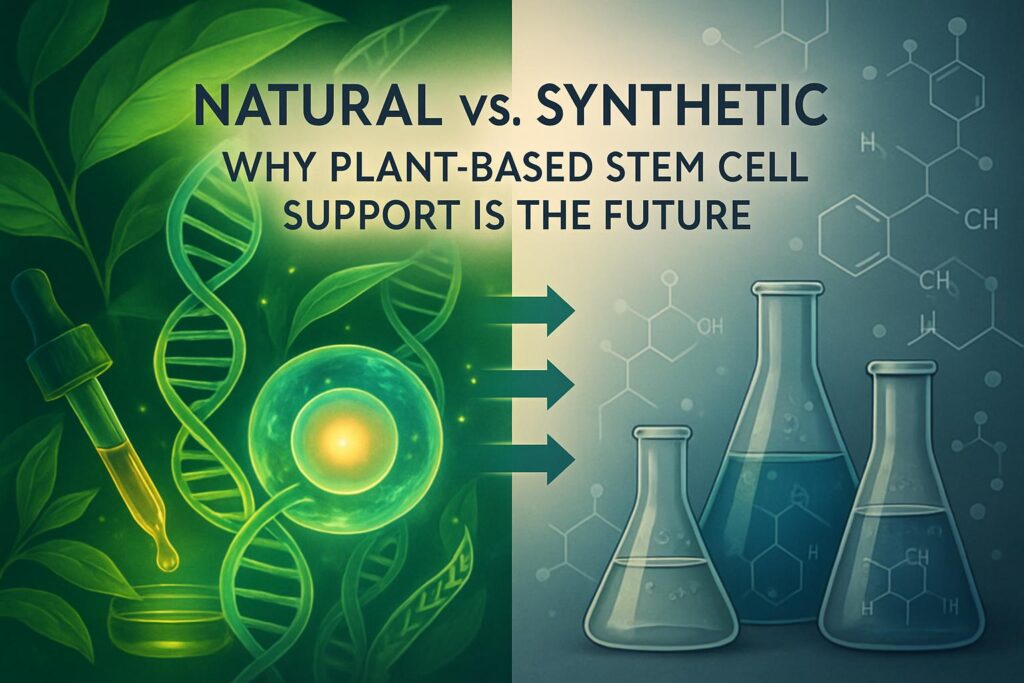Welcome to our article on gene editing techniques in hematologic stem cell therapy. Gene therapy holds immense promise in the field of medicine, offering the potential to treat various blood disorders by modifying the cell genome. In the context of hematologic stem cell therapy, gene editing techniques using programmable nucleases have shown remarkable advancements, bringing us closer to effective treatments for hematologic diseases.
By harnessing the power of technologies such as zinc finger nucleases (ZFNs), transcription activator-like effector nucleases (TALENs), and the widely acclaimed CRISPR/Cas systems, researchers have been able to precisely edit the genome of hematopoietic stem cells. This targeted approach involves inducing DNA double strand breaks (DSBs) in the cell’s DNA and utilizing the cell’s natural DNA repair mechanisms to make desired modifications.
Gene editing in hematologic stem cell therapies offers the potential for personalized treatments for blood disorders, including the correction of disease-causing mutations and the introduction of therapeutic transgenes. However, it is important to continue further research to optimize these techniques, address safety concerns, and ensure their long-term efficacy before they can be widely implemented.
Key Takeaways:
- Gene editing techniques offer the potential to treat various blood disorders through targeted modifications of the cell genome in hematopoietic stem cells.
- Programmable nucleases, including CRISPR/Cas systems, have revolutionized gene editing by enabling precise modifications of DNA sequences.
- Therapeutic opportunities include gene correction, knockout, addition, and targeted transgene expression.
- Allogeneic hematopoietic stem cell transplantation and autologous hematopoietic stem cell gene therapy are important treatment modalities in the field.
- While gene editing holds great promise, ethical considerations, safety concerns, and patient accessibility need to be addressed for responsible and equitable use.
Programmable Nucleases for Targeted Genome Editing
Programmable nucleases, such as zinc finger nucleases (ZFNs), transcription activator-like effector nucleases (TALENs), and CRISPR/Cas systems, are the key tools used for targeted genome editing.
These nucleases consist of a DNA binding domain and an effector domain with nuclease activity.
ZFNs and TALENs recognize specific DNA sequences through their DNA binding domains and induce DNA double strand breaks (DSBs) through their effector domains.
CRISPR/Cas systems, on the other hand, use a guide RNA (sgRNA) to target specific DNA sequences and recruit the Cas9 endonuclease to induce DSBs.
These programmable nucleases provide a powerful means for precisely editing the genome of hematopoietic stem cells, allowing for the correction of disease-causing mutations or the integration of therapeutic transgenes.
Programmable nucleases play a crucial role in targeted genome editing by introducing specific modifications into the genome of hematopoietic stem cells.
In addition to their DNA binding domains, these nucleases have effector domains with nuclease activity, enabling them to induce DNA double strand breaks (DSBs) at specific sites.
ZFNs and TALENs utilize their DNA binding domains to recognize and bind to specific DNA sequences, while CRISPR/Cas systems rely on guide RNAs (sgRNAs) for sequence-specific targeting.
By introducing DSBs at precise locations, programmable nucleases allow for precise modifications, including correction of disease-causing mutations and integration of therapeutic transgenes, in the genome of hematopoietic stem cells.
| Programmable Nuclease | Mechanism | Advantages |
|---|---|---|
| Zinc Finger Nucleases (ZFNs) | Recognize specific DNA sequences and induce DSBs | High specificity and flexibility |
| Transcription Activator-like Effector Nucleases (TALENs) | Recognize specific DNA sequences and induce DSBs | High specificity and versatility |
| CRISPR/Cas systems | Use guide RNAs (sgRNAs) to target specific DNA sequences and induce DSBs | Easy design and efficient targeting |
The table above summarizes some of the programmable nucleases commonly used in targeted genome editing. Each nuclease has its own mechanism and unique advantages, making them versatile tools for precise genetic modifications in hematopoietic stem cells.
Therapeutic Opportunities for Targeted Genome Editing in HSPCs
Targeted genome editing in hematopoietic stem and progenitor cells (HSPCs) presents exciting therapeutic opportunities for the treatment of various blood disorders. Through the use of programmable nucleases, such as CRISPR/Cas systems, specific genetic modifications can be introduced into the genome of HSPCs, enabling precise and effective treatments.
By inducing DNA double strand breaks (DSBs), programmable nucleases initiate the cell’s natural DNA repair mechanisms. Two primary repair pathways that can be exploited for targeted genome editing in HSPCs are non-homologous end joining (NHEJ) and homology-directed repair (HDR).
NHEJ repairs DSBs through error-prone rejoining of DNA ends. This can result in small insertions or deletions (indels) that disrupt the function of target genes. Exploiting NHEJ allows for targeted gene knock-out, providing a means to disable genes causing diseases.
HDR, on the other hand, utilizes a homologous DNA template to accurately repair DSBs and introduce precise genetic modifications. HDR presents various therapeutic opportunities, including the restoration of the correct reading frame, gene correction of point or multiple mutations, gene addition in a safe harbor locus, and targeted transgene expression using endogenous regulatory elements.
Targeted genome editing in HSPCs holds the promise of personalized and curative treatments for blood disorders.
Through the precise manipulation of the genome in HSPCs, scientists and researchers can create customized therapeutic strategies that address the specific genetic causes of blood disorders. By targeting and modifying the genes responsible for these diseases, it becomes possible to restore normal cellular function and alleviate symptoms.
To visualize the different therapeutic opportunities presented by targeted genome editing in HSPCs, refer to the following table:
| Therapeutic Approach | Applications |
|---|---|
| Targeted gene knock-out | Disabling disease-causing genes |
| Restoration of the correct reading frame | Correcting genetic mutations that disrupt protein synthesis |
| Gene correction of point or multiple mutations | Repairing specific genetic mutations responsible for diseases |
| Gene addition in a safe harbor locus | Introducing therapeutic genes into specific genomic regions |
| Targeted transgene expression using endogenous regulatory elements | Regulating the expression of transgenes using the cell’s own regulatory elements |

With the ability to precisely edit the genome of HSPCs, the potential for transforming the treatment of blood disorders is within reach. However, it is crucial to continue optimizing these techniques, ensuring their safety and long-term efficacy before widespread application in clinical settings.
Through ongoing research and advancements in targeted genome editing, we can overcome the challenges that lie ahead and unlock the full therapeutic potential of these innovative approaches for the benefit of patients with blood disorders.
Allogeneic Hematopoietic Stem Cell Transplantation
Allogeneic hematopoietic stem cell transplantation (HSCT) is a standard treatment for genetic blood cell diseases. In this procedure, genetically normal hematopoietic stem cells (HSCs) from a matching donor are transplanted to replace the diseased HSCs in the patient. The success of allogeneic HSCT depends on the degree of human leukocyte antigen (HLA) matching between the donor and recipient.
A higher degree of HLA matching reduces the risks of graft rejection and graft-versus-host disease (GVHD), a major complication of allogeneic HSCT. In GVHD, the donor immune cells attack the recipient’s tissues, causing further complications.
However, the widespread application of allogeneic HSCT is limited by the availability of suitable matched donors and the potential immunological complications involved.

“Allogeneic HSCT offers a potential cure for genetic blood cell diseases, but careful consideration of HLA matching and managing the risks of graft rejection and GVHD are crucial for successful outcomes.”
Autologous Hematopoietic Stem Cell Gene Therapy
Autologous hematopoietic stem cell gene therapy offers a safer alternative to allogeneic hematopoietic stem cell transplantation (HSCT) by utilizing the patient’s own hematopoietic stem and progenitor cells (HSPCs). This groundbreaking approach involves the extraction of HSPCs from the patient’s bone marrow or peripheral blood, followed by ex vivo genetic modification through either gene addition or gene editing techniques.
Gene addition is a method used to introduce a therapeutic gene into the patient’s HSPCs. This is achieved by leveraging self-inactivating lentiviral vectors (SIN-LVs), which have demonstrated enhanced safety profiles compared to earlier generations of viral vectors. SIN-LVs deliver the therapeutic gene to the patient’s HSPCs, enabling the correction of disease-causing mutations or the introduction of therapeutic transgenes.
Gene editing techniques, such as the revolutionary CRISPR/Cas systems, are employed for precise modifications of the patient’s own HSPCs. By using programmable nucleases, CRISPR/Cas systems enable targeted alterations to the HSPCs’ genome, potentially correcting genetic abnormalities responsible for hematologic disorders or facilitating the integration of therapeutic genes.
Autologous hematopoietic stem cell gene therapy can be performed alongside reduced intensity conditioning regimens. These regimens aim to minimize the toxicities associated with traditional conditioning protocols used in allogeneic HSCT. By employing less intensive conditioning, the therapy becomes more accessible and safer for patients, reducing the risk of complications and improving overall treatment outcomes.
Through autologous hematopoietic stem cell gene therapy, individuals with blood disorders can benefit from personalized and curative treatments using their own genetically modified cells. This innovative approach holds great promise for the future of hematologic stem cell therapies, offering improved safety, efficacy, and accessibility for patients in need.
Advantages of Autologous Hematopoietic Stem Cell Gene Therapy:
- Utilizes the patient’s own hematopoietic stem and progenitor cells
- Offers a safer alternative to allogeneic HSCT
- Enables precise modifications through gene addition or gene editing
- Uses self-inactivating lentiviral vectors (SIN-LVs) for improved safety
- Can be performed with reduced intensity conditioning regimens
Advances in HSPC Mobilization and Patient Conditioning
Advances in HSPC mobilization and patient conditioning have greatly enhanced the success of hematopoietic stem cell transplantation. Mobilizing HSPCs from the bone marrow into peripheral circulation is crucial for collecting an adequate number of cells for transplantation. This is achieved through the use of recombinant human granulocyte colony-stimulating factor (G-CSF) or other mobilizing agents like Plerixafor.
Mobilization of HSPCs using G-CSF or Plerixafor increases the chances of successful engraftment, as a higher number of HSPCs can be collected. G-CSF stimulates the release of HSPCs into the bloodstream, while Plerixafor disrupts the adhesion of HSPCs to the bone marrow, facilitating their mobilization.
Patient conditioning plays a critical role in creating space for the transplanted cells by ablating the recipient’s endogenous HSPCs. Traditionally, genotoxic conditioning using chemotherapy agents like busulfan has been employed. However, efforts are underway to develop non-genotoxic conditioning regimens that minimize long-term toxicities.
An exciting non-genotoxic conditioning approach involves the use of antibodies against antigens specifically expressed by HSPCs. These antibodies effectively deplete endogenous HSPCs, clearing the way for successful engraftment of the transplanted cells.
Overall, the advancements in HSPC mobilization and patient conditioning have revolutionized hematopoietic stem cell transplantation, improving the outcomes and expanding the possibilities for treating various blood disorders.
Advancements in HSPC Mobilization:
- Recombinant human granulocyte colony-stimulating factor (G-CSF) stimulation
- Plerixafor-mediated disruption of HSPC adhesion
Innovations in Patient Conditioning:
- Genotoxic conditioning using chemotherapy agents like busulfan
- Emerging non-genotoxic conditioning strategies with antibodies against HSPC antigens
“The ability to mobilize a higher number of HSPCs and optimize patient conditioning regimens has significantly improved the success rates of hematopoietic stem cell transplantation.”
| Advantages of HSPC Mobilization | Advantages of Patient Conditioning |
|---|---|
| Increased collection of HSPCs | Creation of space for transplanted cells |
| Improved chances of successful engraftment | Depletion of endogenous HSPCs |
Gene Editing Techniques in HSPCs for Non-Blood-Related Disorders
Gene editing techniques in hematopoietic stem and progenitor cells (HSPCs) have expanded beyond blood-related disorders and demonstrated potential for treating inherited disorders affecting various tissues and organs. In addition to traditional gene addition and gene correction approaches, advanced tools like base editing and prime editing have revolutionized the therapeutic applications of HSPCs.
Base editing enables precise modification of a single DNA base without requiring DNA double strand breaks, offering a new level of accuracy in genetic editing. This technique allows for targeted changes in specific genetic sequences, offering potential treatments for a wide range of non-blood-related disorders.
Prime editing takes gene editing to the next level by enabling the direct rewriting of DNA sequences. This versatile tool combines the flexibility of CRISPR-Cas systems with reverse transcriptase activity to edit the genome with unprecedented precision. Prime editing holds tremendous potential for correcting disease-causing mutations and introducing therapeutic genetic modifications in HSPCs.
These advancements in gene editing techniques expand the therapeutic applications of HSPCs beyond the hematopoietic system, offering hope for the treatment of various inherited diseases affecting different tissues and organs.
New Therapeutic Opportunities
The emergence of base editing and prime editing techniques has opened up new possibilities for treating non-blood-related disorders using HSPCs. Here are some examples of the expanded therapeutic applications:
- Treating genetic neurological disorders: Base editing and prime editing offer the potential to correct mutations in genes associated with neurological disorders such as Huntington’s disease, Alzheimer’s disease, and Parkinson’s disease.
- Addressing genetic muscular disorders: By precisely editing the genome of HSPCs, base editing and prime editing could potentially correct mutations in genes related to muscular dystrophy, myotonic dystrophy, and other muscular disorders.
- Targeting genetic metabolic disorders: Base editing and prime editing present opportunities to address inherited metabolic disorders by precisely modifying genes responsible for metabolic pathways and enzyme deficiencies.
- Treating genetic ophthalmic disorders: These advanced gene editing techniques can be harnessed to correct mutations in genes associated with inherited retinal diseases, providing potential therapeutic options for conditions like retinitis pigmentosa.
These are just a few examples of the expanded therapeutic applications of gene editing techniques in HSPCs for non-blood-related disorders. As research and technology continue to advance, the potential for personalized and curative treatments using HSPCs becomes increasingly promising.
Comparing Gene Editing Techniques in HSPCs
| Gene Editing Technique | Advantages | Limitations |
|---|---|---|
| Base Editing | Precise single-base modifications Minimal off-target effects Efficient editing efficiency | Limited editing range Dependent on targetable DNA bases and PAM sequences Unsuitable for large-scale DNA alterations |
| Prime Editing | Wide range of genetic alterations Enhanced editing precision Allows for targeted insertions, deletions, and base substitutions | Complexity of delivery and optimization Editing efficiency varies across target loci Potential for off-target effects |
Table: Comparing the advantages and limitations of base editing and prime editing techniques in HSPCs for non-blood-related disorders.
Potential and Future Directions
The expansion of gene editing techniques in HSPCs for non-blood-related disorders highlights the tremendous potential of genome engineering in the field of regenerative medicine. Base editing and prime editing offer new opportunities to address a wide range of inherited diseases affecting different tissues and organs.
As research progresses, efforts to optimize the safety, efficiency, and delivery methods of these advanced gene editing techniques will continue. The development of novel targeting strategies and improvements in the precision of genetic modifications will further enhance the therapeutic applications of HSPCs in treating non-blood-related disorders.
With each breakthrough, we move closer to a future where gene editing techniques in HSPCs transform the landscape of medicine, offering targeted and personalized treatments for a multitude of inherited diseases outside the realm of blood-related disorders.
Ethical Considerations and Future Directions
The use of gene editing techniques in hematopoietic stem and progenitor cells (HSPCs) poses significant ethical considerations. These include concerns about safety, long-term efficacy, regulatory frameworks, and patient accessibility. While gene editing holds tremendous promise for treating genetic diseases, it is crucial to establish strict regulatory guidelines and ethical standards to ensure responsible and transparent use.
Safety concerns: One of the primary ethical considerations in gene editing is safety. As HSPCs are edited to correct genetic defects or introduce therapeutic modifications, it is essential to thoroughly assess the long-term effects of these interventions on the patients’ health. This requires comprehensive preclinical and clinical studies to ensure the safety and minimize potential risks.
Long-term efficacy: Another ethical consideration revolves around the long-term efficacy of gene editing in HSPCs. It is crucial to understand the durability and stability of the therapeutic modifications made to the genome. Long-term studies and follow-ups are necessary to evaluate the effectiveness and sustainability of these interventions, ensuring that patients continue to benefit from the treatment over time.
Regulatory frameworks: To address the ethical concerns associated with gene editing in HSPCs, robust regulatory frameworks must be in place. These frameworks should establish clear guidelines for the approval, monitoring, and oversight of gene editing therapies. Ethical review boards, regulatory agencies, and professional societies play crucial roles in evaluating the benefits, risks, and ethical implications of these interventions.
Patient accessibility: Ensuring equitable access to gene editing therapies is another ethical consideration. These treatments have the potential to significantly improve the lives of individuals with genetic diseases. Efforts should be made to make these therapies accessible to all patients in need, regardless of their socioeconomic status or geographical location.
“Ethical guidelines and rigorous regulatory frameworks are paramount to ensure responsible and transparent use of gene editing techniques in HSPCs.”
Future Directions
As we navigate the ethical considerations associated with gene editing in HSPCs, there are several future directions and ongoing efforts that should be highlighted:
- Continued research and clinical trials: Further research and clinical trials are crucial to address the safety concerns and optimize the efficacy of gene editing techniques in HSPCs. These studies will enhance our understanding of the potential risks and benefits, allowing for more informed decision-making in the field.
- Refinement of regulatory frameworks: Regulatory frameworks need to evolve alongside advances in gene editing technologies. Regular updates and revisions to these frameworks should consider emerging ethical challenges, changing societal perspectives, and scientific advancements.
- International collaboration and consensus: Establishing international collaborations and consensus on ethical guidelines can foster global cooperation and ensure consistent ethical practices in gene editing therapies. This approach will help avoid disparities in access to treatment and promote a unified approach towards responsible use.
- Education and public awareness: Education and public awareness initiatives are essential to foster understanding and informed discussions around gene editing in HSPCs. These efforts should involve healthcare professionals, patients, families, policymakers, and the general public to ensure well-informed decision-making.
As the ethical considerations surrounding gene editing in HSPCs continue to be addressed and future directions are pursued, we move closer to a future where these transformative therapies can be effectively and responsibly utilized, improving the lives of individuals with genetic diseases.
Conclusion
Gene editing in hematologic stem cell therapies holds immense therapeutic potential for the treatment of blood disorders. The use of programmable nucleases, particularly CRISPR/Cas systems, allows for precise and targeted modifications of the genome in hematopoietic stem cells, paving the way for personalized and curative treatments.
Despite the significant progress in this field, there are still challenges that need to be addressed. Optimizing the safety and long-term efficacy of gene editing techniques remains a priority. Further research is needed to thoroughly understand the potential risks and ensure the development of robust safety protocols. Additionally, regulatory and ethical considerations must be carefully navigated to ensure responsible use and patient welfare.
Looking ahead, the future of gene editing in hematologic stem cell therapies is promising. Continued advancements in gene editing technologies, coupled with rigorous clinical trials and research, will further refine and enhance the therapeutic potential of these interventions. Moreover, efforts to improve patient accessibility to these novel therapies will be crucial in realizing their full potential.
In conclusion, gene editing in hematologic stem cell therapies has ushered in a new era of precision medicine for blood disorders. While facing challenges in safety, regulatory concerns, and equitable access, the field continues to evolve and expand. With ongoing research and future breakthroughs, gene editing holds the promise of revolutionizing the treatment of blood disorders and creating a brighter future for patients.
FAQ
What is gene editing?
Gene editing is a technique that aims to modify the cell genome to treat human diseases, such as blood disorders. It involves replacing defective genes or introducing novel cellular functions.
What are programmable nucleases?
Programmable nucleases, such as zinc finger nucleases (ZFNs), transcription activator-like effector nucleases (TALENs), and CRISPR/Cas systems, are tools used for targeted genome editing. They can induce DNA double strand breaks (DSBs) and enable precise modifications of the genome.
What therapeutic opportunities does targeted genome editing in HSPCs offer?
Targeted genome editing in hematopoietic stem and progenitor cells (HSPCs) allows for the correction of disease-causing mutations, restoration of correct reading frames, gene correction, gene addition, and targeted transgene expression using endogenous regulatory elements.
What is allogeneic hematopoietic stem cell transplantation?
Allogeneic hematopoietic stem cell transplantation (HSCT) is a standard treatment for genetic blood cell diseases. It involves transplanting genetically normal HSPCs from a matching donor to replace the diseased HSPCs in the patient.
How does autologous hematopoietic stem cell gene therapy work?
Autologous hematopoietic stem cell gene therapy uses the patient’s own HSPCs. These cells are genetically modified ex vivo through gene addition or gene editing techniques and then reintroduced into the patient.
What are the advances in HSPC mobilization and patient conditioning?
HSPCs can be mobilized from the bone marrow into peripheral circulation using recombinant human granulocyte colony-stimulating factor (G-CSF) or other mobilizing agents. Patient conditioning involves using genotoxic or non-genotoxic agents to create space for the transplanted cells.
Can gene editing techniques be used for non-blood-related disorders?
Yes, gene editing techniques in HSPCs have potential applications in treating non-blood-related inherited disorders using advanced tools like base editing and prime editing.
What are the ethical considerations of gene editing in HSPCs?
Ethical considerations include safety concerns, long-term efficacy, regulatory frameworks, and equitable access to treatment. Stricter regulations and ethical guidelines are needed to ensure responsible and transparent use.
What is the future of gene editing in hematologic stem cell therapies?
Gene editing holds tremendous therapeutic potential for the treatment of blood disorders. Continued research and advancements in technologies will address challenges and shape the future of gene editing in hematologic stem cell therapies.



